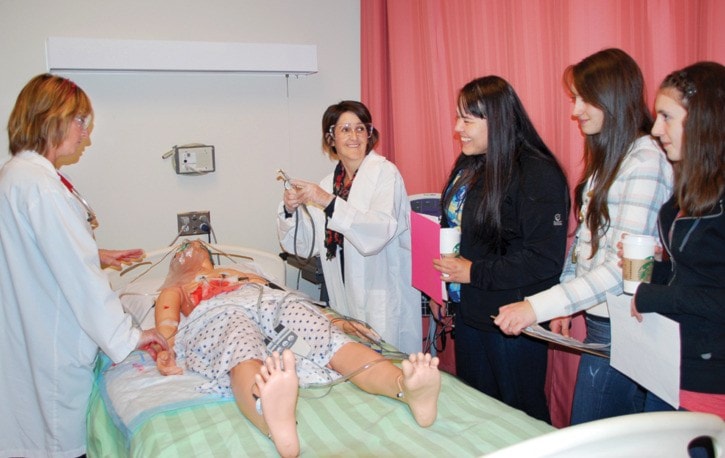It was pretty well an even split between those who figured out the murder mystery puzzle at TRU’s CSI Crime Night last Thursday evening and those who got it wrong.
After reading the extensive crime scene scenario set in Williams Lake’s 1922 gold rush tent city; sifting through all the suspect biographies and psychological profiles; talking with actors walking about the university dressed as suspects; and viewing forensic evidence set up in the archaeology, biology, chemistry, English, nursing and psychology departments, 18 teams came up with the correct answer.
Another 19 teams got the answer wrong.
The left handed, Wilfred Newton, stabbed the drunkard and bully, Dudley Knolls, in the liver and killed him — likely out of revenge. Newton apparently blamed Knolls for injuries he sustained in Scotland where he was involved in a drunken brawl and either fell or was pushed off a bridge.
Newton apparently carried a grudge and tracked Knolls from Scotland to Canada with the intention of killing him.
All of the participants in the CSI Crime Night had their names put in a draw for a Kindle WiFi e-reader that was won by Dina O’Connor, says campus co-ordinator Grace Simpson.
Participants with the correct answers also had their names placed in a separate draw for a selection of other prizes.
Mikaela Martin and Nadia Klaue won the draw to selected their prizes from a TRU T-shirt, mug or flash drive.
Alex Page won the $50 gift certificate from Wise Owl Toys and Ginger Houser won the Mystery Party Game from Wise Owl Toys.
In introducing the costumed suspects at the beginning of the evening Ray Sanders, director for TRU’s Williams Lake campus and regional centres, explained the CSI evening was an opportunity for high school students and their families to visit the university and see what it has to offer.
He encouraged secondary students to take at least their first two years of university here at home where they can save about $8,000 a year in expenses compared to attending a large university in a bigger centre.
He said statistics also show that 60 per cent of students from smaller cities and towns who head off to large cities for higher education right after high school end up returning home after the first year.
However, students who go on to larger universities after a year or two at a local college or university do very well in their post secondary education.
